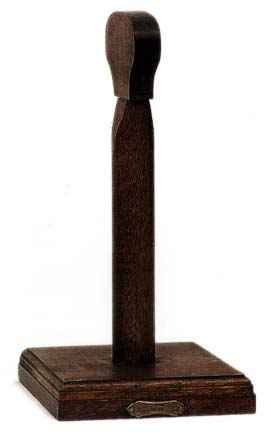joiner_sim
Established Member
Hi all,
I have got to do some mortice & tennon joints. Normally I'd either cut them by hand, bandsaw or using a tennoning machine. However, the bandsaw and tennoner is not an option as my current workplace does not have those machines. Short of doing them by hand, I'm thinking of using the panel saw to do them on. But would like to hear any opinions you may have on the method I am thinking of cutting the tennons in.
The timber will only be about 25x25mm and the riving knife on the saw (I think) doesn't restrict anything going over the top of the blade, only the back end of it. If it does may have to take riving knife off. I hope to achieve a tennon of about 18x18mm. The blade will only be out by 7mm. I will be using the sliding carriage of the saw to hold and cut the tennons. I'm thinking to achieve accurate and repeat tennons, I will use the fence set back away from the blade to set up the shoulder cut. Then I will repeat cuts each time taking the piece away from the fence each time I make a cut. I will do this on all four sides of the tennon.
Does that sound like a safe and accurate way to do this task? I only have about 10 tennons to do, but do want to make a nice job of this, as we don't usually do much bespoke work. And normally its more likley to be a butt joint with the nail gun!
I have got to do some mortice & tennon joints. Normally I'd either cut them by hand, bandsaw or using a tennoning machine. However, the bandsaw and tennoner is not an option as my current workplace does not have those machines. Short of doing them by hand, I'm thinking of using the panel saw to do them on. But would like to hear any opinions you may have on the method I am thinking of cutting the tennons in.
The timber will only be about 25x25mm and the riving knife on the saw (I think) doesn't restrict anything going over the top of the blade, only the back end of it. If it does may have to take riving knife off. I hope to achieve a tennon of about 18x18mm. The blade will only be out by 7mm. I will be using the sliding carriage of the saw to hold and cut the tennons. I'm thinking to achieve accurate and repeat tennons, I will use the fence set back away from the blade to set up the shoulder cut. Then I will repeat cuts each time taking the piece away from the fence each time I make a cut. I will do this on all four sides of the tennon.
Does that sound like a safe and accurate way to do this task? I only have about 10 tennons to do, but do want to make a nice job of this, as we don't usually do much bespoke work. And normally its more likley to be a butt joint with the nail gun!






